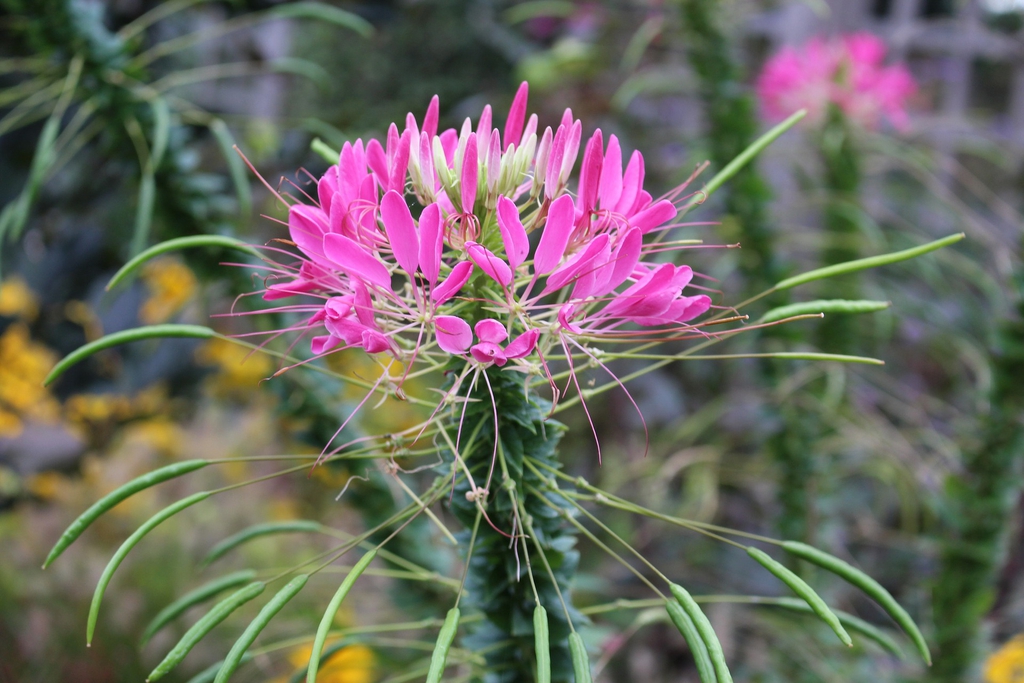The Spider Flower
go.ncsu.edu/readext?880317
en Español / em Português
El inglés es el idioma de control de esta página. En la medida en que haya algún conflicto entre la traducción al inglés y la traducción, el inglés prevalece.
Al hacer clic en el enlace de traducción se activa un servicio de traducción gratuito para convertir la página al español. Al igual que con cualquier traducción por Internet, la conversión no es sensible al contexto y puede que no traduzca el texto en su significado original. NC State Extension no garantiza la exactitud del texto traducido. Por favor, tenga en cuenta que algunas aplicaciones y/o servicios pueden no funcionar como se espera cuando se traducen.
Português
Inglês é o idioma de controle desta página. Na medida que haja algum conflito entre o texto original em Inglês e a tradução, o Inglês prevalece.
Ao clicar no link de tradução, um serviço gratuito de tradução será ativado para converter a página para o Português. Como em qualquer tradução pela internet, a conversão não é sensivel ao contexto e pode não ocorrer a tradução para o significado orginal. O serviço de Extensão da Carolina do Norte (NC State Extension) não garante a exatidão do texto traduzido. Por favor, observe que algumas funções ou serviços podem não funcionar como esperado após a tradução.
English
English is the controlling language of this page. To the extent there is any conflict between the English text and the translation, English controls.
Clicking on the translation link activates a free translation service to convert the page to Spanish. As with any Internet translation, the conversion is not context-sensitive and may not translate the text to its original meaning. NC State Extension does not guarantee the accuracy of the translated text. Please note that some applications and/or services may not function as expected when translated.
Collapse ▲ Spider Flower (Cleome hasslerana) or Cleome is native to southeastern Brazil and Argentina making it a great plant for hot dry areas once it is established. This 3-4 foot erect plant has numerous, rose-purple, or white flowers with petals about 1” long and stamens 2-3” long. The spider-like effect of the flower is created by the abnormally long stamens. It blooms all summer long until the first hard frost and flowers continuously. A volunteer from seed popped up in the middle of a path in the Extension Master Gardener℠ Teaching Garden and everyone enjoyed it so they allowed it to stay.
Spider Flower (Cleome hasslerana) or Cleome is native to southeastern Brazil and Argentina making it a great plant for hot dry areas once it is established. This 3-4 foot erect plant has numerous, rose-purple, or white flowers with petals about 1” long and stamens 2-3” long. The spider-like effect of the flower is created by the abnormally long stamens. It blooms all summer long until the first hard frost and flowers continuously. A volunteer from seed popped up in the middle of a path in the Extension Master Gardener℠ Teaching Garden and everyone enjoyed it so they allowed it to stay.
Some cultivars to try include ‘Cherry Queen’, cherry-rose flowers, ‘Helen Campbell’ white flowers, ‘Pink Queen’, pink flowers, and ‘Rose Queen’, rose-pink flowers and more colorful than ‘Pink Queen’).
Cleome is a flower that my grandmother always had in her garden, so I grow it in my own garden because it brings back fond childhood memories for me. It should be grown in sun to partial shade. While it grows well in hot, dry conditions, it also responds well to abundant moisture. You can propagate cleome easily from seed. For best seed germination, utilize alternating temperatures of 85° days and 70° nights and cover seeds lightly. Cleome also readily self-seeds in the fall. Leave the seeds in your flower bed, and see what colors come up next spring — they may or may not be the same color as what you first planted! You may get more than you need from them self-seeding, but you can easily pull the ones you don’t want in the spring when they are small. I had volunteers from seed this year in my garden and they were various shades of pink to purple. Cleome is basically disease and insect free. Uses for cleome include backgrounds, cut flowers, even a temporary shrub. If you are not familiar with this annual and want to learn more about it, visit the NC Extension Plant Toolbox.




